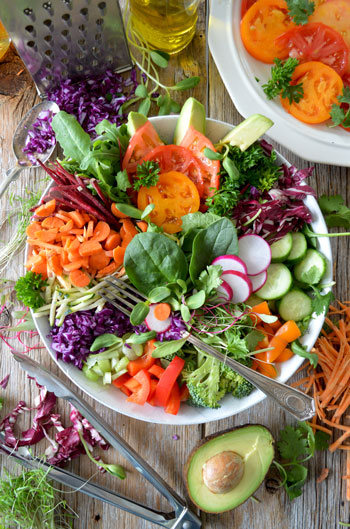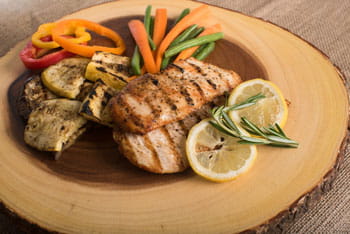Healthy Eat On A Budget With Grace Young
Hey guys! Today, I have a very special blog post for you written by my friend Grace Young. Grace is a Health Coach in the Billings area who focuses on living healthy in all aspects of life. I fully credit her with getting my butt back in shape after having my first son. She’s incredible and she agreed to share with us some of her best tips on eating healthy while on a budget, which we all know can be a daunting task. It’s that time of year when we are starting to think about warmer weather, summer vacation and all the unhealthy eating we did during our hibernation months, so this felt like the perfect time for Grace to share with us! All of Grace’s contact information is linked at the bottom of the article, feel free to reach out to her with any further questions. Without further ado, here’s Grace!
I have a deep appreciation for learning and absolutely adore educating people about health and wellness. I know it is overwhelming to change your eating habits because when you consider everything you eat and drink throughout the day, as well as how much it will cost you to buy all the ingredients you might need, it can add up quickly.
As a health coach, I hear about a lot of barriers that hold people back from eating more high quality foods. I believe everyone knows what they need to eat to be healthy, they may just get stuck when it comes to the ‘how’. When I first decided I needed to change the way I thought about the food I ate and how I cared for my body, I felt intimidated. I didn't know where to start, and I did not know what was going to give me the results I wanted.
I feel like over the last 10 years, I have skillfully learned how to get the most ‘bang for my buck’ as they say out of a trip to the grocery store. Healthy eating is no longer overwhelming and getting creative with herbs, spices, vegetables, and fresh foods has become fun!
Here is a quick guide on how to create a perfect meal you feel good about eating, with high quality and nutrient dense ingredients, even on a short budget.
1. Center Your Meal Around Your Vegetable
 This is the first step for a very important reason! Research has shown that a diet focused on vegetables and fruits not only helps maintain a healthy weight, but can also provide a defense system against chronic disease such as diabetes, high blood pressure, and even chronic pain.
This is the first step for a very important reason! Research has shown that a diet focused on vegetables and fruits not only helps maintain a healthy weight, but can also provide a defense system against chronic disease such as diabetes, high blood pressure, and even chronic pain.
When focusing on a healthy and budget friendly meal, loading your plate with in-season vegetables will cut the cost while also providing everything you need for a healthy body and mind.
When Fresh Doesn’t Fit the Budget, Choose Frozen Instead
Fresh and frozen vegetables both provide similar nutrient value, so if you are short on time and funds, sometimes frozen and pre chopped vegetables are the way to go.
Fruits and vegetables used for freezing are usually picked at peak ripeness, when they are the most nutritious. Out of season vegetables have a higher cost because they have been in transit from another area of the world for anywhere from 3 days to a couple weeks, losing most of the nutrient value they had. When vegetables are not in season, there will be more nutrient value in the frozen fruit or vegetable option.
2. Dish Up the Correct Portions
Choosing a Lean Protein
We are conditioned, myself included, to focus our meals around a protein source. Part of this idea is true, and yet we get so swept away in choosing a protein source, that we end up leaving out all the other important pieces to a healthy meal.

When choosing a protein source to add to your meal, my recommendation is to choose one that is lean; in other words, it contains less than 10% fat. This includes fish and shellfish, chicken, lean beef (90% lean or higher), tofu, beans and lentils, and eggs.
Serving sizes are the next factor to consider when it comes to your perfect meal. An easy way to visualize a single serving of protein at a meal is to clench your fist and keep it small. Your body is only able to process 25g of protein in a serving, meaning you get everything you need out of a smaller portion of meat.
Add a Little Whole Grains
A little goes a long way when it comes to cooking whole grains for your meals at home. Rice or quinoa double in quantity when cooked, and when eaten in the correct servings, will provide a family of 4 with a great side dish.
A serving of whole grains at each meal gives our bodies vital nutrients and quick energy we do not get out of other food choices. Carbohydrates provide the fastest source of glucose, which is why when you are hungry you reach for the sugary pastry first if you aren't mindful of your choices. Compared to other grains, the whole grain is higher in fiber and other nutrients such as B vitamins, folate, iron, folate, selenium, magnesium and potassium.
Brown rice, barley, buckwheat, quinoa, wild rice, and whole grain oats are all good sources of whole grain. When adding these grains to our perfect meal, having them in their most whole and unrefined form will give us the greatest benefit. Add more flavor and variety to your grains by making them into a salad with fresh or sautéed vegetables, an oil based dressing, and garnish with fresh herbs.
A serving of whole grains is also about the size of your fist (½ cup), and will provide you with plenty of energy without overdoing it on calories.
3. Meal Plan
Meal planning is always my first suggestion when it comes to my client’s success. When you start with a plan, there is so much opportunity for a successful week!
 Create a list from your plan and only buy what’s on the list, this way the decision of what’s for dinner is already made after a long day at work- that is usually when we are experiencing what is called ‘decision-fatigue’, making the idea that ordering takeout from the nearest pizza joint rather than spending the same time preparing a healthier option at home sound so appealing. Your body will be thankful you chose that sheet pan dinner of chicken and mixed vegetable fajitas over a meat lovers pizza, believe me!
Create a list from your plan and only buy what’s on the list, this way the decision of what’s for dinner is already made after a long day at work- that is usually when we are experiencing what is called ‘decision-fatigue’, making the idea that ordering takeout from the nearest pizza joint rather than spending the same time preparing a healthier option at home sound so appealing. Your body will be thankful you chose that sheet pan dinner of chicken and mixed vegetable fajitas over a meat lovers pizza, believe me!
Have you ever had those vegetables you bought with great intention of using them, they sat in your fridge for over a week, and ended up going bad, so despite your good intentions, you just had to throw them out? We all have great intentions when it comes to eating more vegetables, but without a plan, they sit in our fridge and go to waste. Creating a meal plan before going to the store and buying these veggies will ensure they you aren’t throwing out your hard-earned dollars. Vegetables not only add nutrients to your meals, but they can also provide a good crunch and delicious flavor and smell when cooked into a dish. Spending 30 minutes on the weekend to create a meal plan can save you precious time and money throughout the week.
Set Yourself a Grocery Budget and Don’t Exceed It
When on a budget, you may be surprised how far your dollars go at the grocery store. Measured against a meal out to eat, buying fresh and frozen items at the grocery store for a home cooked meal will make your wallet happy. In her last blog, Molly talked about how buying fresh vegetables are much cheaper than fruit, but buying apples and melons are a good fruit option on a budget, and how generic items are most cost effective. These are all great suggestions that I live by as well!
Remember the upfront cost may seem steep, but it means you won’t have to spend that extra money on a last-minute decision to take the family to dinner.
4. Drink Water- it’s FREE
 Always choose water over sodas, fruit juices, sports drinks, or caffeinated beverages. Water provides a calorie free lubricant to your joints and muscles, increases brain power and allows your body to function smoothly with plenty of energy, promotes weight loss as it flushes out toxins, improves your complexion and boosts your immune system. That's a lot of goodness out of something tasteless and calorie free! With our body being made up of 60-70% water, we feel our best by staying hydrated and drinking plenty of water throughout the day.
Always choose water over sodas, fruit juices, sports drinks, or caffeinated beverages. Water provides a calorie free lubricant to your joints and muscles, increases brain power and allows your body to function smoothly with plenty of energy, promotes weight loss as it flushes out toxins, improves your complexion and boosts your immune system. That's a lot of goodness out of something tasteless and calorie free! With our body being made up of 60-70% water, we feel our best by staying hydrated and drinking plenty of water throughout the day.
My recommendation for water intake is half of your bodyweight in ounces a day. By starting your day with a big glass and continuing that behavior throughout the day around your meals, you should be able to reach your goal. If you want a little extra flavor, add a few berries, citrus, or cucumbers and mint to your water and let them soak overnight.
BONUS: Satisfy Your Sweet Tooth in a Healthy Way

Indulge in a naturally sweet treat-- fruit! Fruit not only contains natural sugars, it also provides antioxidants for detoxification, vitamins and minerals for added health benefits. Fruits are naturally low in fat, and are good sources of fiber, potassium, vitamin C, and folate for healthy red blood cell formation. Again, the frozen option can be lower cost and still packed with nutritious goodness!
There are many ways to have fruit for dessert that are not simply eating it raw. You can dehydrate your own fruit- be careful of the store bought stuff, it has a lot of added sugar- bake it, or add it to a healthy fruit crisp, and even make a fruit sorbet with it. Whatever you choose, don't be afraid to try new things!
You should now be ready to create your own perfect meal on a low budget! Be open to trying new things, always add a vegetable to your meals, keep your servings of protein and whole grains to the size of your fist (yes, your man's fist might be bigger than us ladies ;) ), and always drink water- it’s FREE and zero calorie! Plan to succeed with a meal plan that ensures you won’t let any vegetable go to waste, and you will feel happier, healthier, and more energized with the nutrient dense, delicious and satisfying meals.
Grace Young
Health Coach
www.gracemyoung.wixsite.com/younghealth
IG: @grace.m.young
FB: Grace Young Wellness
LinkedIn: gracemyoung
406-697-1286
Opinions expressed in the attached article are those of the author and are not necessarily those of Raymond James. All opinions are as of this date and are subject to change without notice. Raymond James is not affiliated with and does not endorse the opinions or services of Grace Young.

